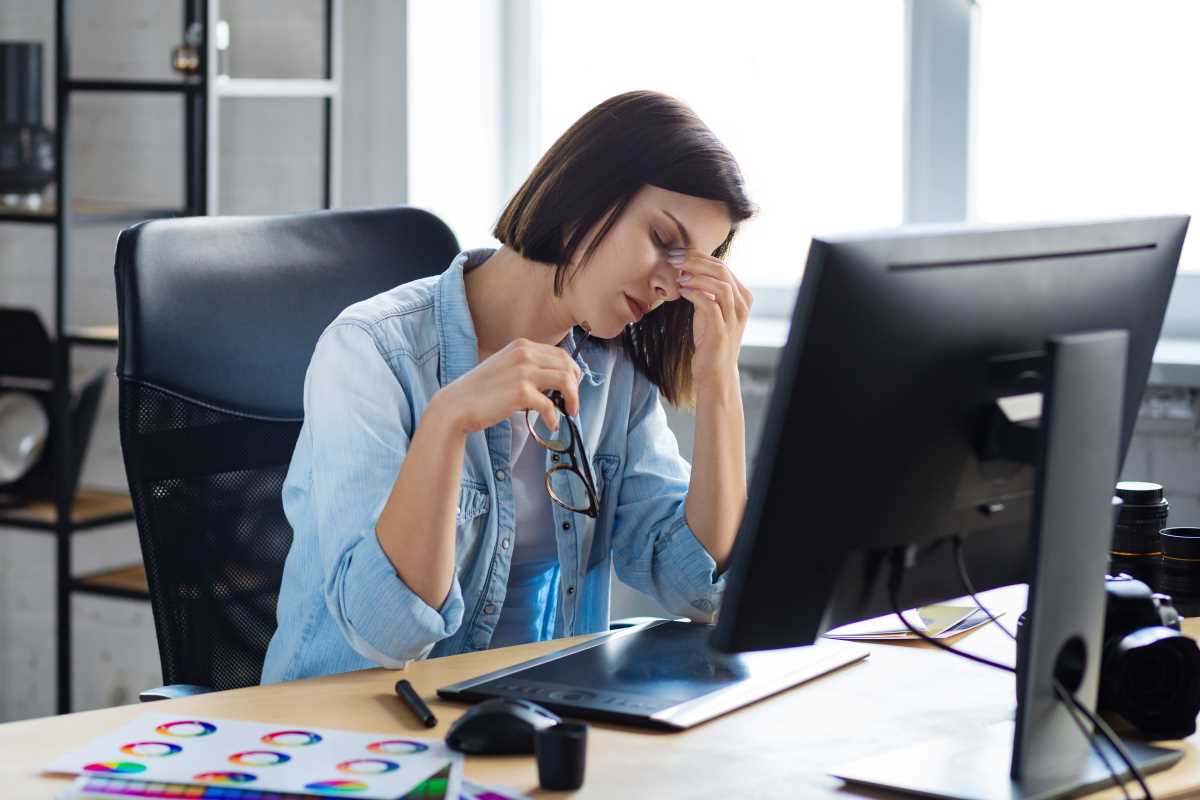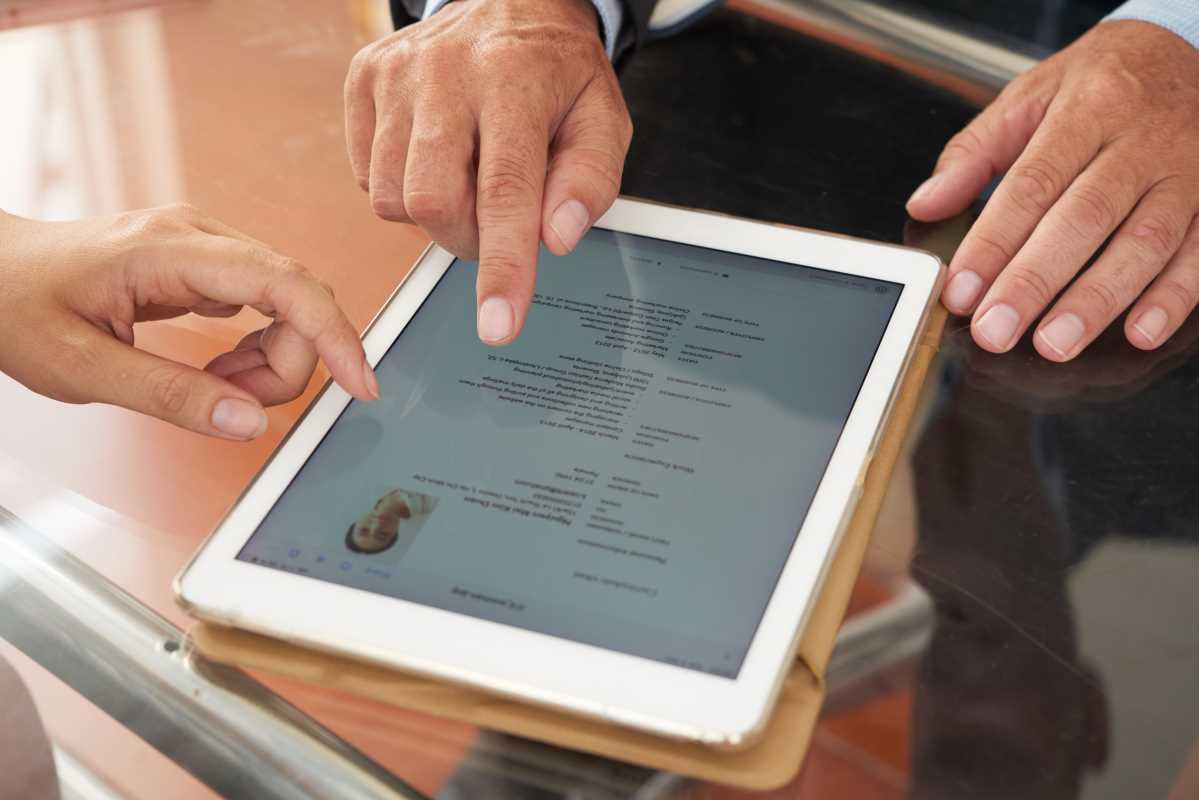If you spend most of your day staring at a computer screen, you’ve probably felt that familiar burn in your eyes by the end of the workday. Eye fatigue, also known as digital eye strain, is incredibly common among office workers. The good news is that you don’t have to accept tired, dry, or irritated eyes as part of your daily routine. By understanding the root causes of eye fatigue and learning specific strategies to counteract its effects, you can protect your vision and feel more comfortable at work. This guide explores how office settings contribute to eye strain and what you can do to ease the discomfort.
What Causes Eye Fatigue in Office Environments?
1. Prolonged Screen Time
One of the most common causes of eye fatigue is spending endless hours in front of your computer. When you’re focused on a screen, you blink far less often. Blinking keeps your eyes lubricated and refreshed, so when you blink less frequently, your eyes become dry and irritated. On top of that, screens emit high-energy blue light, which can exacerbate strain.
2. Poor Lighting
The brightness (or lack of it) in your workspace can also stress your eyes. Overly bright lighting, like harsh fluorescent bulbs, might cause glare, while dim lighting forces your eyes to work harder to see. Pair this with a glowing screen, and your eyes have to constantly adjust to contrasting levels of brightness, which is exhausting.
3. Improper Workstation Setup
Many office workers unknowingly maintain poor posture or set up their monitors at incorrect heights and angles. If your screen is too far, too close, or positioned at the wrong angle, your eyes need to strain to see clearly. Ergonomics isn’t just about preventing back and neck pain; it plays a role in your eye comfort too.
4. Unhealthy Habits
Long stretches without breaks, inadequate hydration, poor nutrition, and even stress can worsen eye fatigue. Dehydration, for example, can lead to dry eyes, while a diet low in eye-essential nutrients like vitamin A or omega-3 fatty acids may leave your eyes feeling less resilient.
Actionable Tips for Reducing Eye Strain
The good news is that you can make small, deliberate changes in your daily routine and workspace to reduce eye fatigue dramatically. Here are practical steps you can take.
1. Follow the 20-20-20 Rule
The 20-20-20 rule is simple and effective. Every 20 minutes, look away from your screen and focus on something that’s at least 20 feet away for 20 seconds. This brief but intentional pause gives your eyes a chance to relax and reset.
- Pro tip: Set a recurring timer on your computer or phone to remind you until it becomes a habit.
2. Adjust Your Monitor Settings
Your monitor’s brightness, contrast, and text size play a significant role in eye comfort. Adjust these settings for optimal viewing:
- Match your screen brightness to the brightness of your surroundings to minimize glare.
- Increase text size if you find yourself squinting to read emails or documents.
- Use dark mode or blue light filter settings, especially in the evening.
3. Check Your Workstation Ergonomics
The placement and alignment of your monitor can significantly impact your eye comfort. Follow these guidelines for an ergonomic setup:
- Place your monitor about 20–28 inches (roughly an arm’s length) away from your face.
- Position the top of the screen at or just below eye level so you’re looking slightly downward while working.
- Angle the screen to avoid glare from overhead lighting or windows.
Making these adjustments can reduce the strain of constantly focusing and refocusing as you work.
4. Blink Often and Stay Hydrated
Since reduced blinking causes many of the issues associated with eye fatigue, make a conscious effort to blink more frequently. It sounds simple, but it can make a world of difference!
Keep your eyes hydrated by drinking plenty of water. If your office is particularly dry, consider using a humidifier or artificial tears to prevent discomfort caused by dry air.
5. Reduce Glare
Glare from your screen or nearby light sources forces your eyes to work harder. Combat it by:
- Placing an anti-glare screen filter over your monitor.
- Arranging your workspace so screens are not directly in front of windows or harsh lights.
- Using blinds or curtains to diffuse natural light.
- Switching to a desk lamp with a soft, warm light instead of relying solely on overhead fluorescent lights.
6. Take Regular Breaks
Staring at a screen for hours at a time is one of the worst things you can do for your eyes. Incorporate micro-breaks into your workday:
- Stand up, stretch, and walk around for a few minutes every hour.
- Use these breaks to physically step away from your computer and shift your gaze.
7. Consider Computer Glasses
If you frequently experience discomfort, a pair of computer glasses could help. These specialized lenses are designed to reduce blue light exposure and minimize glare. Many are also available with slight magnification to help your eyes relax while focusing on screens.
8. Perform Eye Exercises
Eye exercises can make a big difference in relieving strain and improving focus. Try these simple exercises:
- Focus Shifting: Hold your thumb close to your face and focus on it for a few seconds, then shift your gaze to something far away and focus on that. Repeat five times.
- Eye Rolls: Gently roll your eyes in a circular motion to relax them and stretch eye muscles.
- Palming: Rub your hands together to warm them, then cup your palms over your closed eyes for a minute. This provides both warmth and darkness, which soothes tired eyes.
9. Adjust Screen Time Outside of Work
Even after leaving the office, you might still spend significant time on your phone, tablet, or TV. Try to reduce these extra hours of screen exposure by setting device-free times. For example, avoid screens during meals or an hour before bed. Use this time for activities like reading (on paper), exercising, or meditating.
10. Fuel Your Eyes with Healthy Nutrition
Your diet impacts your eye health more than you may think. Include foods rich in nutrients that support vision:
- Vitamin A (found in carrots, sweet potatoes, and spinach) promotes eye health.
- Omega-3 fatty acids (from fish like salmon or chia seeds) can combat dry eyes.
- Lutein and zeaxanthin (present in kale, corn, and eggs) reduce the risk of eye strain.
Supplements designed to support vision health can also be helpful if your diet lacks these nutrients.
You might think eye fatigue is a minor inconvenience, but ignoring it can have long-term consequences. Prolonged digital eye strain can lead to vision issues, headaches, and decreased productivity. Protecting your eyes doesn’t just improve your comfort; it boosts your overall well-being.
Your eyes work hard every day, and they deserve care and attention. By taking proactive steps, you’ll not only reduce the irritation you feel today but also preserve your vision for tomorrow.







